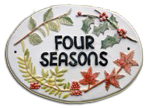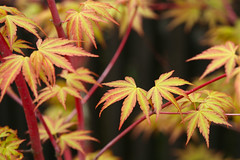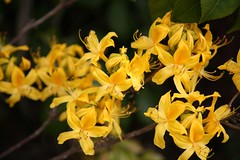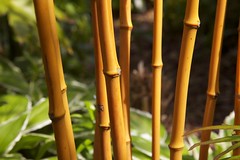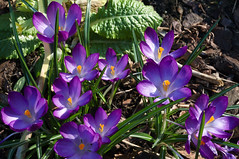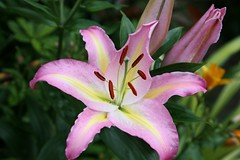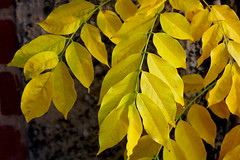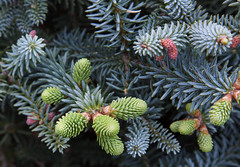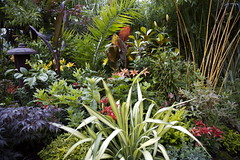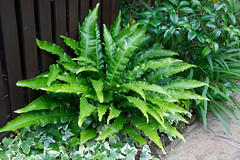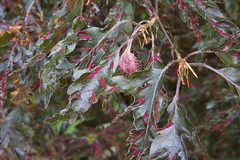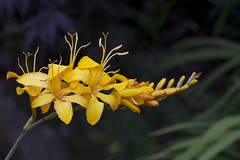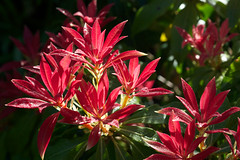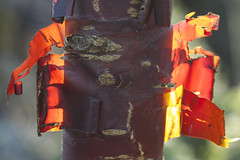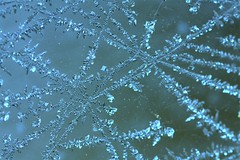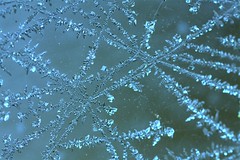Plants by Category
In 1982 we brought with us some acers, azaleas and conifers in pots. We’d been experimenting with them and we thought there was something “special” about them. Acers have movement and wonderful leaf colour. Azaleas have stunning flowers and are good in more than one season. Conifers provided bold colour and contrast all year round – some have their best colour in winter. In 1982 we had no idea that these three groups of plants would be used in such a dominant role in the total relandscaping of our garden in the early 1990s. The neutral to acid soil in our 'new' garden was ideal for these plants.
In 1982 we hadn’t thoroughly worked through our ideas about conifers and during the period 1982-1990 continued to experiment with them. We learnt what were the bad features and what were the good features. We discovered that certain varieties of conifer were totally unsuited to our garden.
We planted a Leylandii hedge of 65 trees; however, eight years later we removed them. We realized that they were totally unsuitable plants for our garden due to their excessive growth rate and ugly features.
By 1990 we had realized that the type of conifers we needed in the garden were ones with attractive, bright foliage throughout the seasons, and which could be maintained to size and look tidy after pruning once a year.
Many of the conifers we decided to select had bright yellow or blue foliage, however this criteria was not exclusive since we were aware of several other varieties of conifer would play a role, e.g. Chamaecyparis obtusa Nana with its bottle green foliage and Chamaecyparis Lawsoniana Summer Snow with its white young leaves.
We also decided to select several conifers from each of the Taxus, Abies and Thuja genera of coniferous trees.
One of our current skills is keeping our collection of bright coloured conifers healthy and to size and in proportion.
A crucial discovery that we had made about conifers was that for all their foliage to look healthy, without dieback, they need ‘all round’ light and therefore, in our replanting scheme, they would need to be allocated their own space. This would mean that maintenance of the garden would include checking each conifer every few months to ensure that other plants were not growing into the conifers and occluding light. Any pruning would need to be sympathetic and seamless so that neither the conifer or other plant looked obviously pruned. Furthermore, this care would lead to maintenance of clear definition of each plant.
Having solved the riddle of the conifers, there was obviously a clear need for other varieties of evergreen foliage in order to make the garden much more interesting. Once again we decided the main choices should be for bright foliage e.g. Aucuba Picturata, Ilex Golden King and Photinia Red Robin.
Photinia Red Robin benefits from regular pruning in the growing season in order to provide continuous red growths for which the Photinia is famous. We have some photinia that are more than twenty-five years old and are still only 18 inches high.
Conifers and other varieties of evergreen are used as a backdrop for other plants, including a riot of flowers from February to November.
Plants have to earn their keep and be interesting for several weeks: deciduous azaleas are stunning in the spring and also provide some of the most vivid leaf colour in the autumn. We decided to that most of the plants that we chose should look stunning, or at worst tidy, in May and preferably should also look good in the autumn.
By timely and meticulous pruning of all plants we can orchestrate the whole garden to appear at its best at different times of the year. However, with all pruning we try to make to make it look as though it hasn’t been done!
Plants also have to be able to be kept to size without looking ugly. We have made mistakes: Acer platanoides “Crimson King” and Robina pseudoacacia Frisia failed the test and were replaced.
Four Seasons Sitemap
© All Rights Reserved
Please do not download our photo images from this website to use for publication or any commercial reason without our permission.
Images may not be copied, reproduced, published or distributed in any medium without the expressed written permission of the copyright holder.
